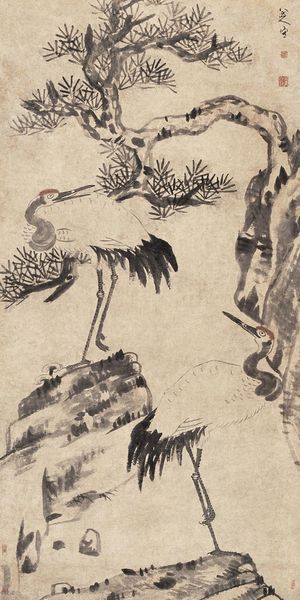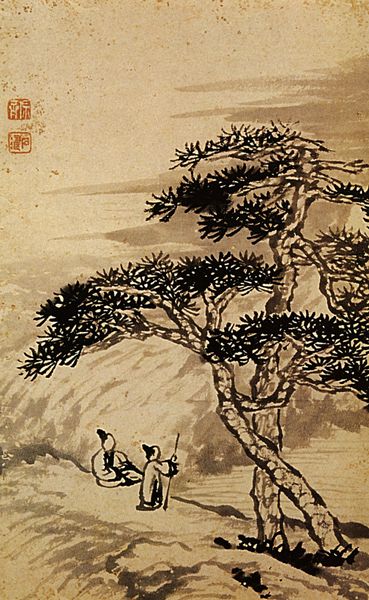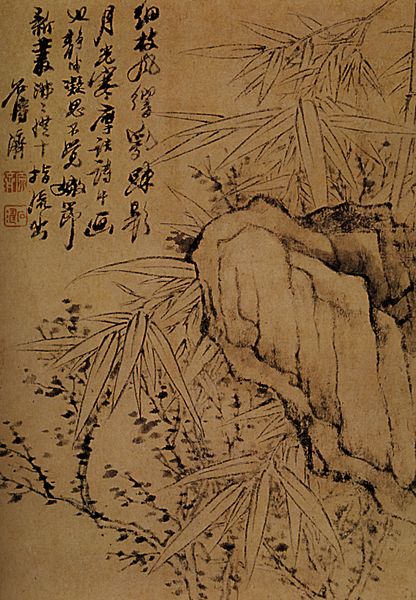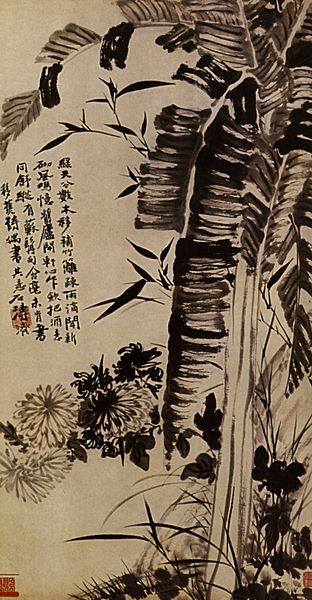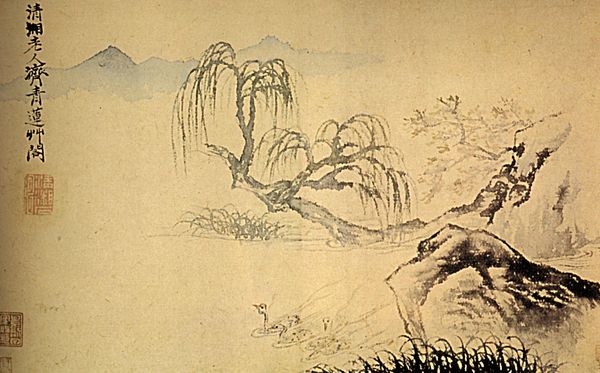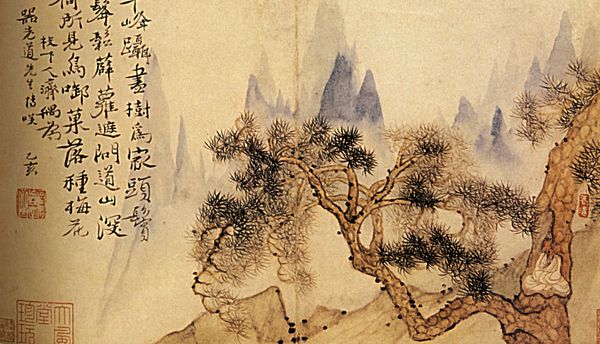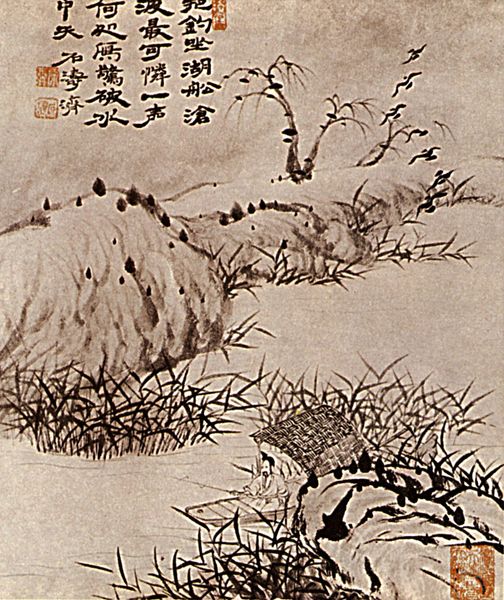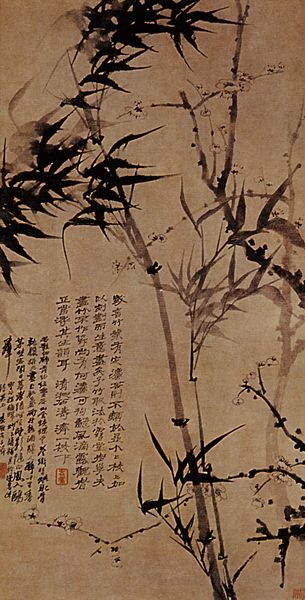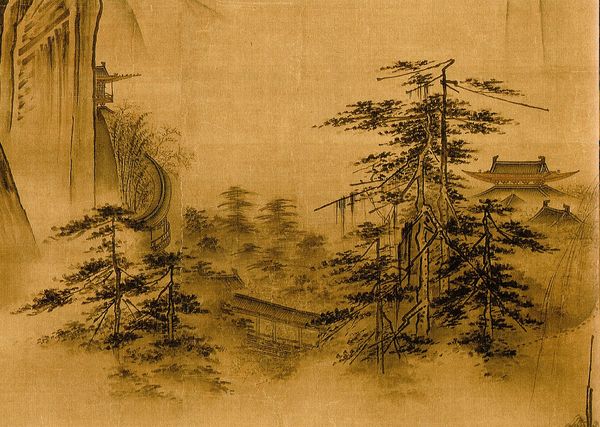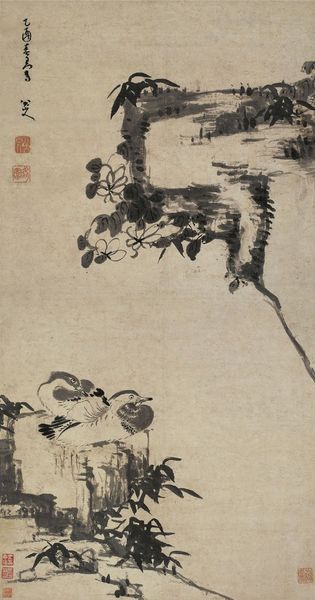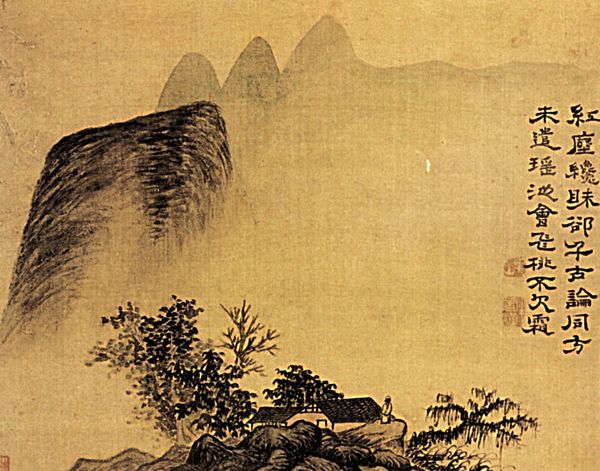
painting, ink
#
ink painting
#
painting
#
asian-art
#
landscape
#
figuration
#
ink
#
forest
#
mountain
#
water
#
line
Dimensions: 27 x 16.3 cm
Copyright: Public domain
Editor: So, this ink painting, "A friend of solitary trees" by Shitao from 1698… I’m really drawn to its simple yet powerful strokes. The landscape feels both vast and intimate. What cultural stories do you see embedded within this piece? Curator: It's fascinating to consider Shitao's landscape within the context of late 17th-century China. Think about the social disruptions of the time. He was a member of the Ming imperial family, and after the Qing dynasty was established, artists often turned inward, exploring personal expression through landscape. Do you notice how the figure is dwarfed by the mountains and trees? Editor: Yes, the figure feels very small, almost insignificant compared to the nature surrounding it. Is this meant to signify a retreat from the world, a finding of solace in nature? Curator: Precisely! It could be read as a statement about the individual's relationship to political power and social upheaval. Landscape painting became a coded way to express sentiments that couldn't be voiced directly. This piece then functions not merely as scenery but as a quiet act of defiance or, perhaps, personal preservation amidst change. Editor: That makes me appreciate it even more, understanding that historical context. It is interesting that landscape paintings are read in that way as that wasn't my initial inclination. It is as if landscape painting allowed freedom of speech. Curator: Indeed. What I appreciate most is the blending of artistic expression and historical conditions that landscape artworks reflect. We can study the social importance and impact these paintings might have had for a population going through hardship. Editor: I'm so glad I asked you about this piece. I’ll never look at a landscape the same way again!
Comments
No comments
Be the first to comment and join the conversation on the ultimate creative platform.
